How to Know if You're Smoking Weed the Right Way

By:
If you walk into your local smoke shop, you're likely to find a wide assortment of marijuana paraphernalia. The modern stoner has an expansive selection of products to choose from, and while you're by no means limited to one smoking apparatus over the other, it can be hard to decide what device is right for you.
RELATED: Marijuana Could Literally Replace These 5 Prescription Drugs
Fear not, ATTN: has your back. Whether you're looking for the healthiest or headiest option, this guide offers a comparative overview of the most common marijuana instruments on the market.
1. Joints (papers)
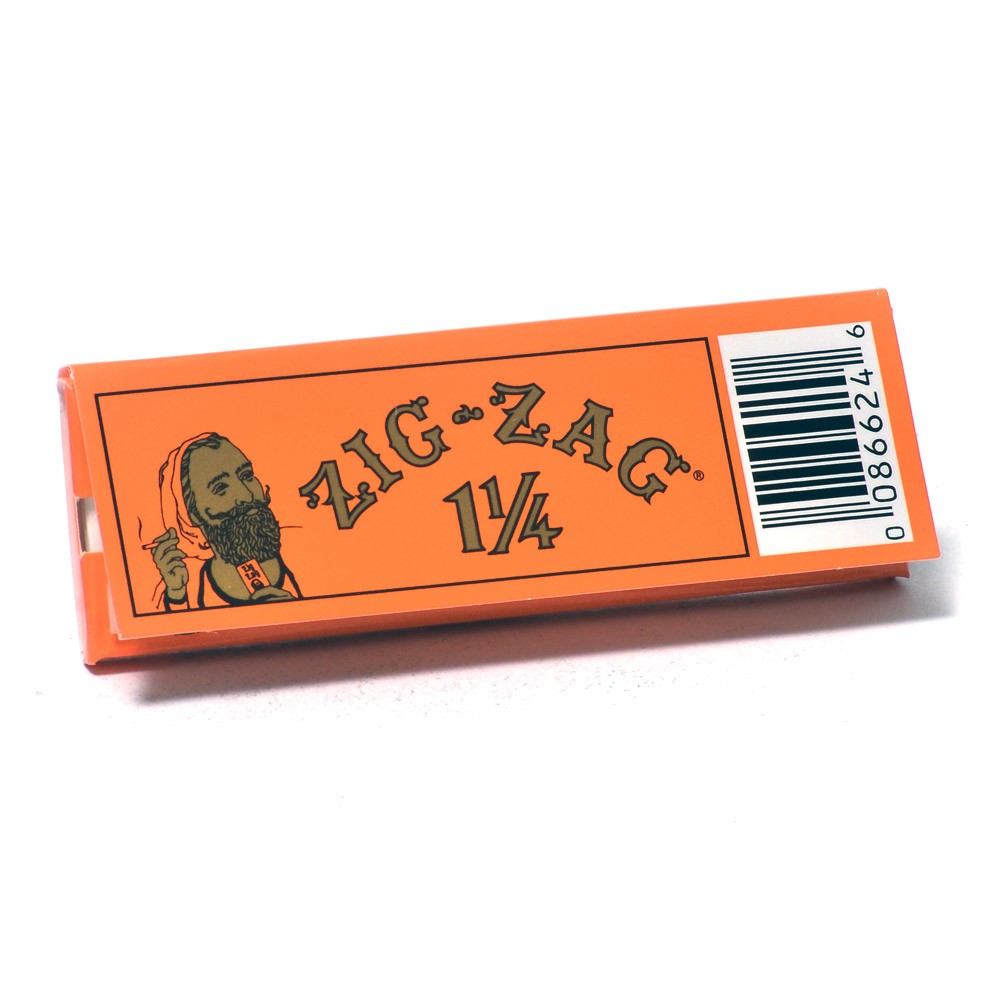 Zig-Zag - marijuanapackaging.com
Zig-Zag - marijuanapackaging.com
The classic joint has always been a favorite among the marijuana using population. You can grind some cannabis, roll it in a Zig-Zag paper using your hands or a joint rolling machine, and burn it down.
Pros: Using a joint can make it easier to control the amount of marijuana you want to smoke. A simple user experience that's especially appropriate in group settings, the joint is a natural choice for beginners and seasoned smokers alike.
This year, researchers at Emory University came out with a study which showed that smoking a joint a day for as many as 20 years did not seem to put marijuana users at risk of any serious adverse effects or diseases.
Cons: Joints aren't particularly discrete. While it may have the general shape of a cigarette, it's not quite so easy to mask the smell. Some studies have linked rolling papers to health issues; papers treated with bleach and other chemicals can irritate your lungs, for example.
2. Vaporizers
An increasingly popular option, vaporizers come in all shapes and sizes. There are sleek, compact products such as the Pax 2. There are pen-like devices that vaporize cannabis oils and concentrates. And there are unique, effective instruments such as the Volcano Vaporizer, which heats your herb and fills a tall bag full of vaporized marijuana.
Pros: By far the most discrete option available, vaporizers are largely odorless and compact. Depending upon whether your device requires ground up cannabis, oils, or concentrates, maintenance can be as replacing a cartridge or filling a small oven compartment.
But for many users, the best part about vaping is that it's considered one of the safest ways to enjoy marijuana. A 2007 study found that vaporizing cannabis significantly reduced the amount of harmful toxins you inhale without affect the amount of THC, the main psychoactive component of pot. Another set of researchers later discovered "meaningful improvements in respiratory function" for study participants who switched from smoked to vaporized marijuana.
Cons: A top-rated vaporizer can be somewhat expensive (between $80 to $280 on average). It seems especially pricey if you're comparing it to the cost of a pack of papers (you can get 5 packs of Zig-Zags — 32 sheets per pack — for about $10 on Amazon). But if you're a regular marijuana users who values discretion or lung health, it's well worth the one-time investment.
3. Bongs
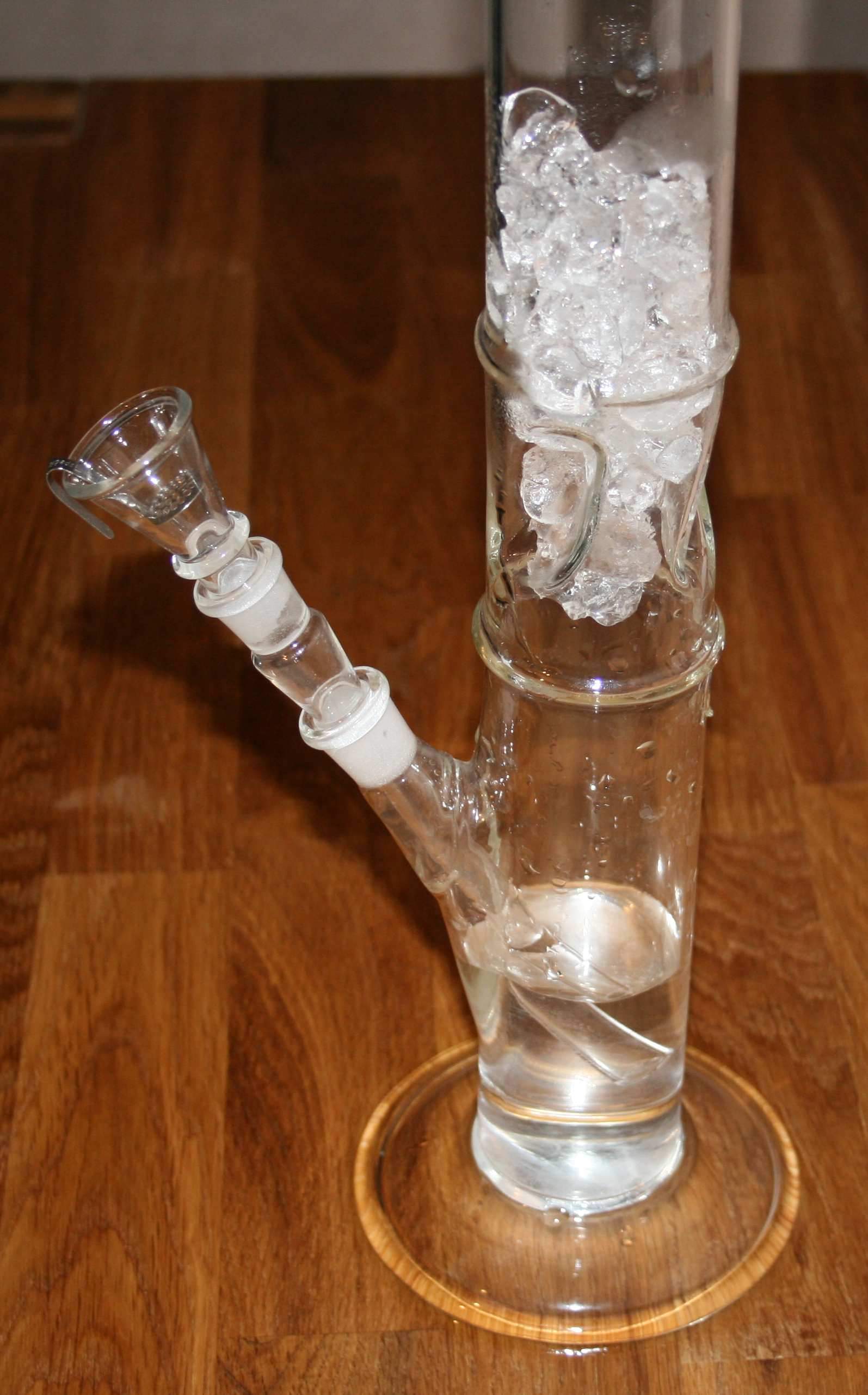 Wikimedia - wikimedia.org
Wikimedia - wikimedia.org
Another classic that tends to evoke images from the 60s and 70s, bongs are tall, glass pipes, partially filled with water. Like vaporizers, they also come in all shapes and sizes. Here's how it works: you place ground up cannabis in a "bowl," which is attached to a stem (a small, thin glass tube that feeds into the water at the bottom of the smoke chamber). You light the bowl, inhale through the top and, when you're ready, pull the bowl from the stem. The smoke filters through the water, cooling it on its way through the chamber.
Pros: Anecdotal evidence indicates that bongs provide the headiest user experience. That is, many users report that using a bong gets them high the fastest. Because the smoke is filtered through water, the smoke is cooled and generally smoother than joints or pipes.
Cons: Despite the aforementioned anecdotal evidence, one study found that marijuana smoke filtered through water results in less THC and more harmful toxins than vaporized cannabis or smoke from a joint. The "least bad" bong tested in the study "produced 30 percent more tar per cannabinoids than the unfiltered joint," the Multidisciplinary Association for Psychedelic Studies wrote in a press release.
Also, while there are certainly inexpensive options, a high quality bong can cost hundreds. The glass is usually thicker for the better bongs, but be warned: One wrong or clumsy move and your glass bong can break. Just about every marijuana-using college student in the country has a horror story to back me up here.
4. Pipes
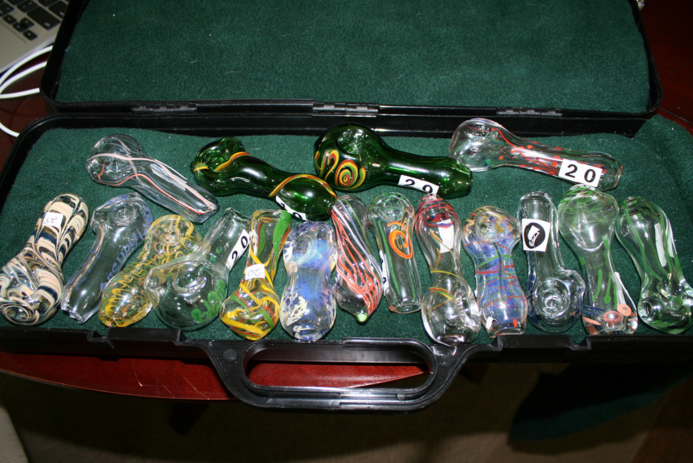 Flickr/Todd Blaisdell - flickr.com
Flickr/Todd Blaisdell - flickr.com
A common and understated smoking apparatus, the glass pipe is a simple device that comes in an impressive range of styles. You put a finger over a carb, a small hole connected to the bowl where you place the ground up marijuana, light the bowl, and inhale through the other side. It delivers your combusted cannabis through a short, straight stem.
Pros: Pipes are cheap, sturdy, and relatively compact. Sure, you can go all out and buy an ornate piece of glass artwork that costs hundreds, but most options shouldn't cost more than $30.
Cons: Depending upon the size of the bowl, pipes aren't usually great for large groups. Other than that, there hasn't been any research into the specific, comparative health effects of using a pipe versus any other smoking apparatus.
5. Edibles
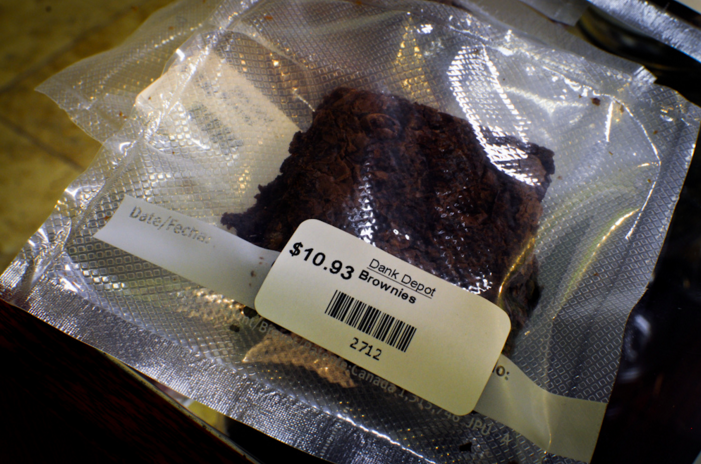 Flickr/Dank Depot - flickr.com
Flickr/Dank Depot - flickr.com
You've heard about marijuana-infused brownies, of course, but what about cannabis gummy bears, pizza, and wine? As the legalization movement continues to spread throughout the U.S., innovative marijuana enthusiasts are cooking up an increasingly diverse list of edibles. For the most part, making edibles involves extracting components of cannabis and infusing them into butter, oils, etc. as a substitute for your average, non-psychoactive option in any applicable recipe.
Pros: Since you're ingesting edibles through your digestive system, there's approximately zero risk to your lungs. They can be really tasty or completely tasteless. For those who can't (or don't like to) smoke, this is clearly an ideal option. It's also a good option for people who use marijuana for exclusively medical purposes, as non-psychoactive components of cannabis such as CBD can be extracted and turned into gel capsules for fast and effective results.
Cons: Assuming you purchased an edible from you local, registered dispensary in one of the 23 states that have legalized marijuana in the U.S., my advice to you is this: Always read the label. A marijuana-infused cookie could be one dose — but it could also be eight. Eating too much of a potent edible can produce a bad trip, something no stoner would wish upon you. If you're an inexperienced marijuana user, be especially wary. While nobody has ever died from a marijuana overdose, it's not a pleasant experience to be too high.
What about the other smoking devices?
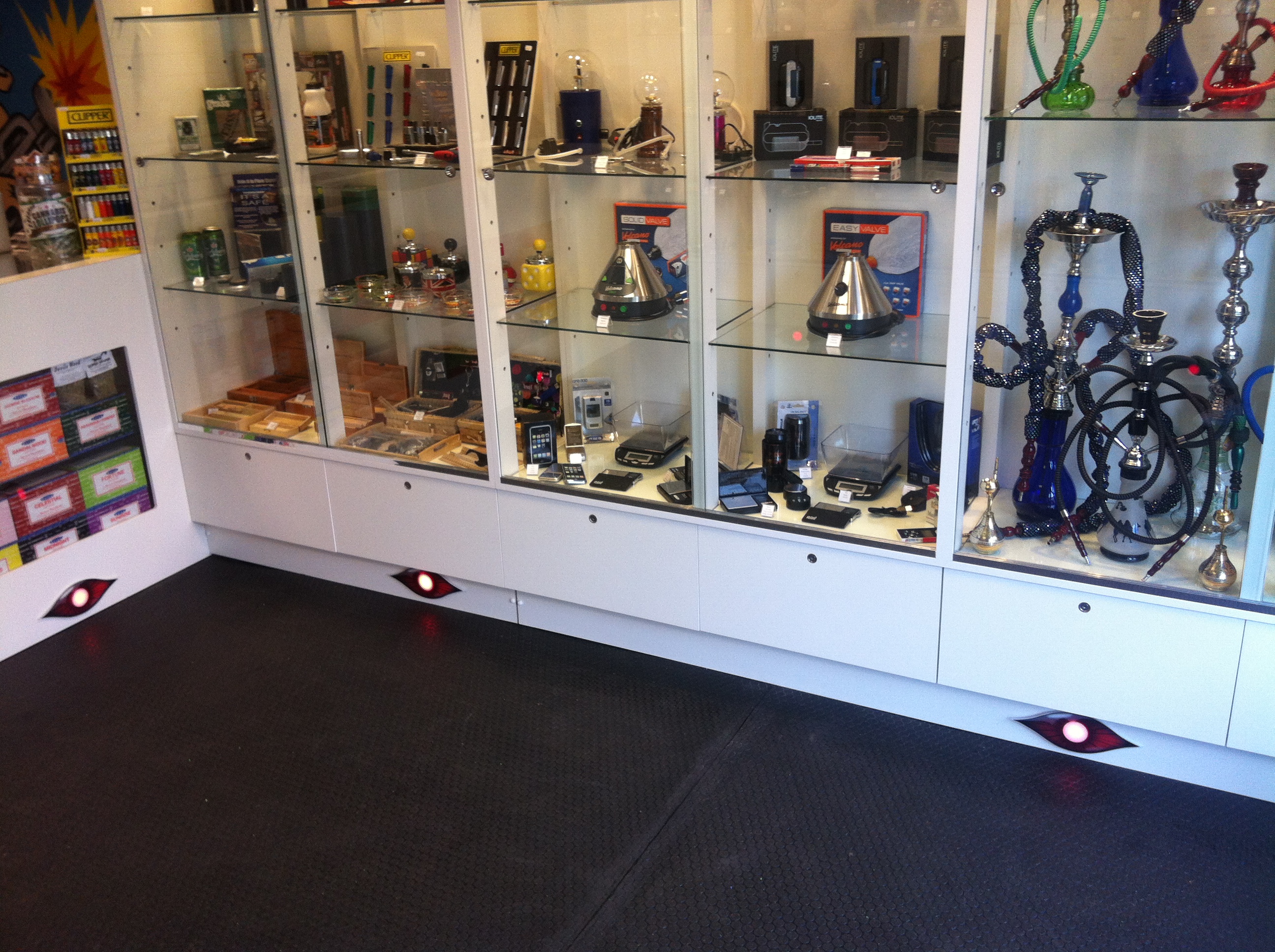
Notable exceptions to this list include blunts, bubblers, oils, and dabbing instruments. Blunts are made of tobacco leaves, so they are substantially worse for you than organic rolling paper. Bubblers are like mini-bongs. And ATTN: has you covered on the specifics of dabbing here; what you need to know is that it involves heating cannabis concentrates that contain nearly twice as much THC as ground up marijuana, meaning that inexperienced smokers should handle with care.
Check out this ATTN: video to learn more about the DEA's War on Drugs and stance on marijuana:
